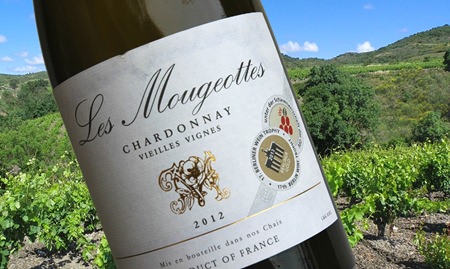And that’s another thing. Have you noticed how exclamation marks are creeping into almost everything? Every Christmas, one of my old school-friends sends me – and presumably everyone else – a photocopied letter with trivial news of family members, most of whom I have never met. I can put up with this, but not the exclamation marks, which appear at the end of almost every sentence. You know the kind of thing: We went to the best bar in town! I had a sherry! And Jim had two beers!! Now I don’t know about you, but I find this irritating and somewhat childish.
The American novelist and screenwriter Elmore Leonard didn’t much care for exclamation marks either. In his excellent Ten Rules of Writing he says, “Keep your exclamation points under control. You are allowed no more than two or three per 100,000 words of prose.” Just to put that figure into perspective, this column contains just over 1,000 words. The Charles Dickens novel, A Tale of Two Cities contains 135,420 words and Ray Bradbury’s novel Fahrenheit 451 manages to struggle by on a mere 46,118.
 Background photo: Languedoc vineyards (Richard Randall).
Background photo: Languedoc vineyards (Richard Randall).
Oh, and in case you’re wondering, bangorrhea isn’t an exotic grape variety, or one of those diseases that you avoid mentioning in polite conversation. It actually means the over-use of exclamation marks in a vain attempt to make your writing sound more exciting or lighter in tone. The British linguist and author David Crystal found that females used exclamation marks four times as often as males. I had suspected this all along.
Surprisingly, exclamation marks didn’t appear on typewriters until the 1970s. Before then, you had to type a full stop; push the clunky back-space key; press and hold the shift key and then type an apostrophe. Perhaps because of all this palaver, people didn’t use exclamation marks very often. Of course, the only time we can safely employ them is after an exclamation or an imperative. “Sod off!” is correctly punctuated, if somewhat impolite. “This is the best bar in town!” is neither.
Now then, where was I? (I was beginning to wonder the same thing – Ed.) Ah yes, wine. Oh dear, I did lose the thread for a moment. It sometimes happens when you get older, you know.
Les Mougeottes Chardonnay 2012 (white), France (Bt. 649 @ Wine Connection)
A distant acquaintance of mine, when asked what wine she’d prefer, is fond of saying in a world-weary sort of way, “Anything but Chardonnay”. I suspect she’s never actually had a decent one and being Australian is familiar only with bland commercial local plonk churned out for the undiscerning masses. Incidentally, I have nothing against Australians, because in one of my previous lives I was a wombat. The point is that if you said “Anything but Chardonnay” in Burgundy where it’s the white grape par excellence and makes some of the finest white wines in the world, you’d probably be lynched or at least bombarded with goat droppings.
This particular Chardonnay is from the Languedoc, down in the southern part of France. It’s an attractive bright golden yellow with a very pronounced Chardonnay character because it’s made from grapes grown on old vines. I know this not because of my mysterious psychic powers, but because it says vielles vignes (“old vines”) on the label. The two circular logos indicate that the wine won a Gold Medal at last year’s Berlin Wine Trophy.
Give it a sniff and you’ll get an attractive, clean-cut aroma of pear and vanilla. It’s very dry with a smooth mouth-feel and a good balance between the fruit and the attractive tang of acidity. There’s a surprisingly long and persistent dry fruity finish too. It’s a pleasant wine to swig on a hot summer’s evening but at 13.5% alcohol and its dash of acidity, it would probably be best with food. Rich salmon, tuna or mild chicken dishes spring to mind, perhaps with some kind of creamy sauce. I’d guess it would work well with a cheese quiche too. I should really go into the kitchen and knock up a quiche just to test the theory. But honestly, at this end of the week, I really can’t be bothered messing around with pastry. In any case, my nerves are a bit frayed because Ee-ah (one of the dogs) has been practising her clarinet for the last two hours. So you’ll just have to take my word for it.
Incidentally, the wine comes in a Burgundy-style bottle and Les Mougeottes does sound a bit like a Burgundian village in the Côte de Nuits. One of my friends had the temerity to suggest that the makers want to give the impression to innocent customers that the wine is from Burgundy. Honestly, how cynical can you get? The French would never resort to such knavish tricks. Perish the thought.
Le Grand Pinot Noir 2012 (red), France (Bt. 490 @ Wine Connection)
The aromas of Pinot Noir (PEE-noh NWAH) can sometimes be a bit enigmatic. Red fruits such as cranberry and raspberry often dominate the aroma but sometimes the wine has more elemental smells, earthy, tree-bark aromas or remainders of stalks and sap. This is not as surprising as it seems because every drop of wine in your glass was once sap in a stick, as British wine-writer Hugh Johnson once reflected.
This wine comes from grapes grown in the foothills of the Pyrenees, near the town of Limoux in south-west France. The label shows a drawing of a large black sheep under which the words “black sheep” are helpfully printed, presumably in case you fail to recognise it. The wine is lighter than I expected, perhaps even a bit too light for a Pinot. It’s actually a blend of Pinot Noir (88%) and Grenache (12%) with an aroma of sour cherries, currants, a dash of citrus and herby spices. It’s a very dry wine with a tang of acidity but the taste struck me as rather unusual and quite different in style to a Pinot Noir from Burgundy. The fruit is restrained, the tannins are very soft and there’s a long, dry finish. I’d describe it as a food wine because it would go well with pork dishes and a variety of cheeses. Unusually for a red wine, you could even try pairing it with tuna or salmon.
And by the way, be sure to avoid exclamation marks in your next letter! Otherwise I shall send Ee-ah around to your place to practise her clarinet! You won’t forget that in a hurry!




